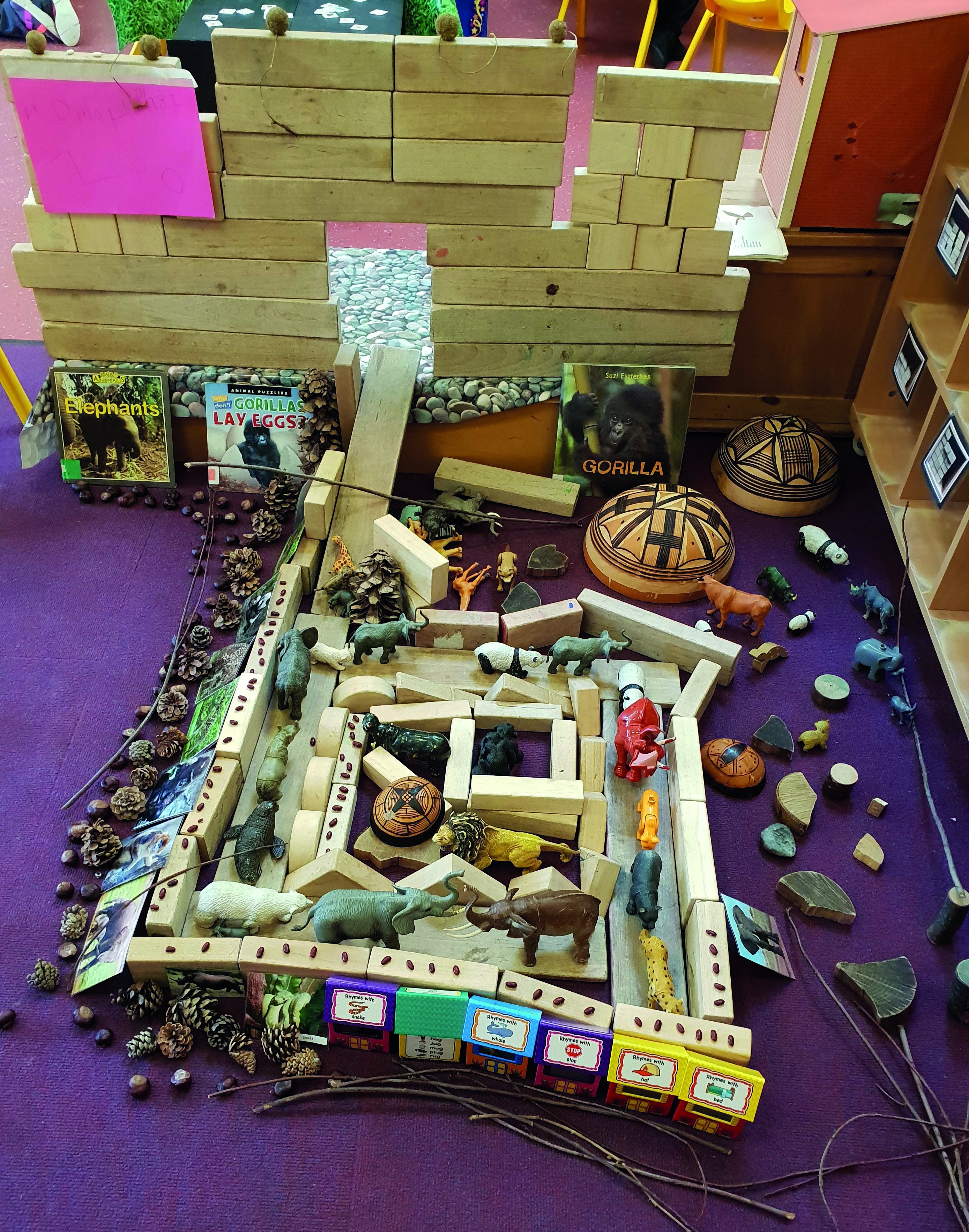
Loose parts are such a versatile, open-ended resource, and the children in my class know they can move them and use them in any area of the classroom, and in any way their imagination takes them. However, they do have to be stored somewhere! I keep mine in my construction area on the unit where I store my wooden blocks. This makes the most sense to me as the blocks are also such an open-ended resource.
I offer my class a selection of mainly natural loose parts such as conkers and pine cones, as well as items such as bottle lids and corks. I ensure there is a selection of different sizes, colours, textures and shapes. This careful selection enables the children to use them in unlimited ways, developing their imaginations as well as narratives around what they have built.
IN PRACTICE
Children made a home for my cat (see photo, above right) by moving resources from other areas of the classroom and using up the majority of the carpet. Note how meticulously the loose parts have been placed and balanced to create a pond to drink from (the blue bottle tops); a beach to relax on (the shells, curtain rings, and corks); a garden (a piece of green material embellished with green glass beads, sticks and pine cones), and a bed (from the home corner) with treats on top of the blanket in case the cat gets hungry!
This was created over the course of a morning by a group of children who were negotiating, problem-solving, imagining, building and changing, adding to, and story-telling. Often the area is not ‘set up’ but left as an open space for the children to use in any way they wish. I have found this enables a truly child-led experience.

DEFINED RESOURCES
I have been asked numerous times what I have done with all my plastic and defined resources, and the answer is I still have them. I have centralised small-world resources such as dinosaurs so that there is a bigger selection (rather than spread over three classrooms). It also means the classrooms are less cluttered. Practitioners take note of children’s current interests and will bring the resources out in response to them. The children also know where the resources are and that they can ask for them.
For example, children combined wooden blocks, loose parts and small-world animals to create a zoo (see photo, above left). The blocks were constructed to make an entrance, with seeds and beans balanced on the top for lights, completed with a sign saying ‘Zoo’. The children carefully created different areas for each of the animals, ensuring they had food, water, and hills to run up and down (the upturned wooden bowls). There are food stalls, and books so visitors can learn about the animals at the zoo – we went to our school library to collect books about the animals.
PAUSE AND LOOK
There may be moments when you introduce loose parts, especially at the beginning, where learning can look like a big mess. Pause and ask the children what they have created. A pile of resources ‘tipped out onto the floor’ was actually a carefully constructed depiction of what happened the day a huge asteroid hit Earth, wiping out the dinosaurs.
TOP TIP!
Enable the children to develop their play by coming back to their construction after lunch or even the next day. Ensure your construction and loose parts are in an area which is not a walkway or used as the main teaching space so anything built can be left out undisturbed.
Shardi Vaziri is assistant head teacher at Tottenhall Infant School in Enfield, North London and an educational consultant specialising in loose parts and sustainable provision. Contact her at: earlyyearsonashoestring@gmail.com.









